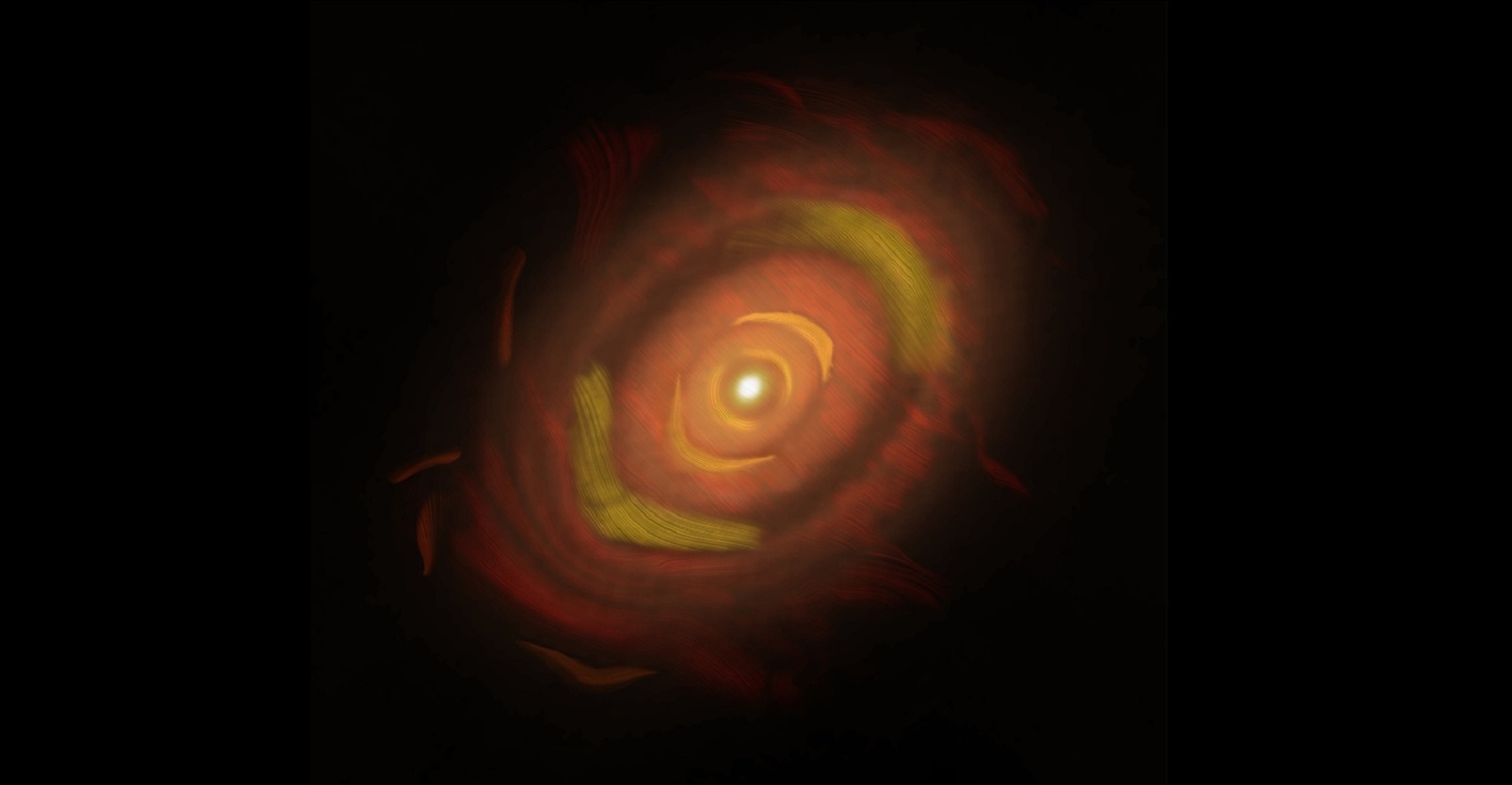The basis of this type of research is measurements of the polarization of light coming from the dust grains that make up the disk. ALMA has been used to perform such analyzes before, but in this case we are talking about images that have never been seen before. Suffice it to say that the number of measurements taken into account by members of the research team was about 100 times higher than is usual in similar studies.
Read also: An exploding star in the distant universe shook Earth’s atmosphere. Is it dangerous for us?
The results of the latter were presented in nature. The information collected during measurements is important because it can be used, for example, to determine the size and shape of dust grains. This is not without importance in the context of the later stages of planet formation. Since scientists cannot go back in time to the moment when the Earth was born, they must observe other systems and the things that currently form them.
The disk of interest to astronomers using the ALMA radio interferometer is located in the HL Tau system, about 450 light-years from Earth. The stars in this region are very young: about one to two million years old. This creates favorable conditions in the context of tracking the birth of planets emerging from protoplanetary disks.
Given the dust’s polarization, which can provide information about the underlying structure of the HL Tau disk, astronomers hoped to collect data that would not have been possible otherwise. Members of the research team know that the HL Tau star and its disk have their own magnetic field. They appear to affect the arrangement of dust grains, and thus the way these grains accumulate and form larger objects. The problem is that polarization measurements show that the dust there does not align with the magnetic fields.
A protoplanetary disk observed by astronomers using the ALMA radio interferometer orbiting the star HL Tau
How can this be explained? The polarization appears to result from the shape of the grains themselves. They are able to polarize light, and what is particularly noteworthy is the fact that one side of the protoplanetary disk appears more polarized than the other. Where is the source of this phenomenon? It appears that it may result from asymmetry in the distribution of dust. Another explanation suggests differences in grain properties on one side.
Read also: There is an Earth-like planet right next to us. An amazing discovery by astronomers
Since there are two aspects behind polarization, i.e. scattering and dust arrangement, the conclusions resulting from the analysis of the new images are surprising. It seems unlikely that the dust is aligned with magnetic fields. Perhaps the basis of this phenomenon is not magnetic at all, but mechanical. What exactly could this be? For example, the effect of the motion of the protoplanetary disk around the star.

Echo Richards embodies a personality that is a delightful contradiction: a humble musicaholic who never brags about her expansive knowledge of both classic and contemporary tunes. Infuriatingly modest, one would never know from a mere conversation how deeply entrenched she is in the world of music. This passion seamlessly translates into her problem-solving skills, with Echo often drawing inspiration from melodies and rhythms. A voracious reader, she dives deep into literature, using stories to influence her own hardcore writing. Her spirited advocacy for alcohol isn’t about mere indulgence, but about celebrating life’s poignant moments.


![Featured quotes from Polish comedy. How many of them will you recognize? [QUIZ] Featured quotes from Polish comedy. How many of them will you recognize? [QUIZ]](https://ocdn.eu/pulscms-transforms/1/StBk9kpTURBXy8wZDY2NDY1Y2U2MWJkNjllYjFlMjU2ZDIyMjU1NTQxNy5wbmeTlQMAAM0HgM0EOJMJpmNjMjllNAaTBc0EsM0Cdt4AAaEwAQ/kultowe-cytaty-ze-starych-komedii-pytamy-o-klasyke-i-hity-lat-90-od-lewej-kadry-z-filmow-kilerow-2-och-mis-nic-smiesznego.jpg)








